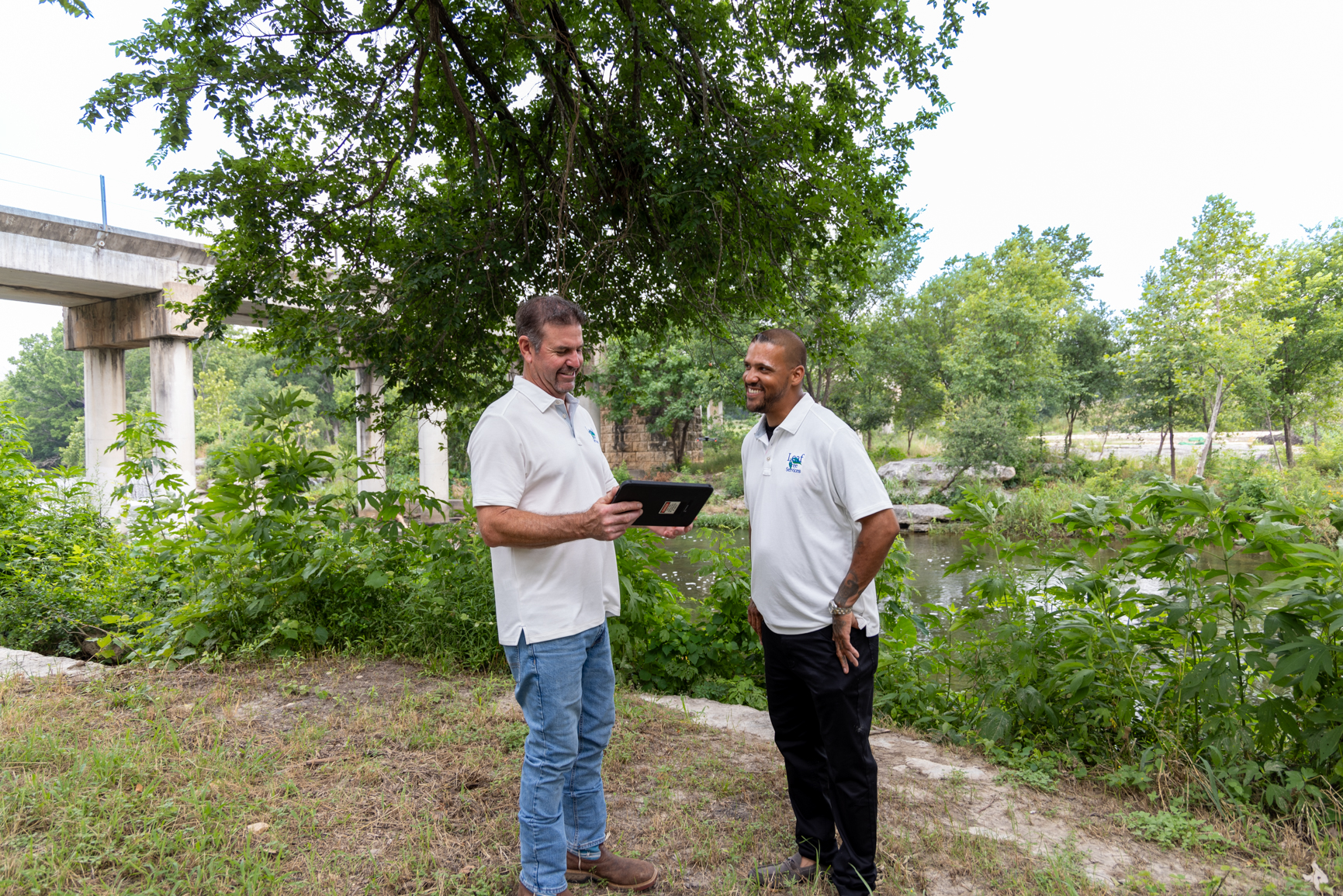Tree Service expert can help evaluate the pros and cons of stump removal vs. grinding
Tree Service in Round Rock and Austin TX can help determine if stump removal or grinding can be ideal for you. When a tree is cut down, what’s left behind can be an eyesore and a potential hazard: the stump. Homeowners are often faced with the decision of whether to grind the trunk or opt for complete stump removal. Both methods have their advantages and drawbacks, and the best choice depends on various factors such as future landscaping plans, budget, and personal preference. This article will explore the pros and cons of both grinding the trunk and complete stump removal to help you make an informed decision.
Understanding the Basics
Stump Grinding
Stump grinding involves using a machine to grind the tree stump down to below the surface of the soil. The grinder, a high-speed disk with teeth, chips away at the wood, reducing it to small pieces. Typically, the stump is ground to a depth of about 4-6 inches, although it can be ground deeper if needed. The resulting wood chips can be used as mulch or removed from the site.
Stump Removal
Stump removal, on the other hand, involves extracting the entire stump and root system from the ground. This method requires heavy machinery, such as a backhoe or an excavator, to pull out the stump and its extensive root network. Once removed, the hole left behind needs to be filled with soil or another material.
Pros and Cons of Stump Grinding
Pros
- Cost-Effective: Stump grinding is generally less expensive than stump removal because it requires less labor and equipment.
- Quick Process: Grinding a stump can be done relatively quickly, often in just a few hours, depending on the size of the stump.
- Minimal Disturbance: Since grinding only affects the stump and a small area around it, there’s minimal disruption to the surrounding landscape.
- Aesthetic Improvement: Grinding removes the visible portion of the stump, improving the appearance of your yard.
- Mulch Creation: The wood chips produced from grinding can be used as mulch for your garden beds.
Cons
- Root Remnants: While the stump is ground down, the roots remain in the ground and can decay over time, potentially causing sinkholes or attracting pests.
- Limited Depth: Grinding typically only goes 4-6 inches below the surface, which may not be sufficient if you plan to replant or build over the area.
- Possible Regrowth: In some cases, particularly with certain tree species, new shoots may sprout from the remaining roots.
Pros and Cons of Stump Removal
Pros
- Complete Removal: The entire stump and root system are removed, eliminating any possibility of regrowth or decay-related issues.
- Flexibility for Future Use: With the stump and roots gone, you have a clear, unobstructed area to replant, build, or landscape as you wish.
- Pest Prevention: Complete removal reduces the risk of pests, such as termites and ants, that can be attracted to decaying wood.
Cons
- Higher Cost: Stump removal is generally more expensive due to the labor and machinery required.
- Extensive Landscaping: The process can be disruptive, leaving a large hole that needs to be filled and potentially damaging nearby plants or structures.
- Time-Consuming: Removing a stump, especially a large one with an extensive root system, can be a time-consuming process.
Factors to Consider
Future Landscaping Plans
If you plan to replant a tree, build a structure, or create a new garden bed in the area, stump removal may be the better option. It provides a clean slate, free of any obstructions. On the other hand, if the stump is in an out-of-the-way location or you don’t have immediate plans for the area, grinding may be sufficient.
Budget
Cost is a significant factor for many homeowners. Stump grinding is generally more budget-friendly, making it a popular choice. However, consider the long-term costs as well. If the remaining roots lead to problems down the line, you may end up paying more for additional work.
Environmental Impact
Both methods have environmental considerations. Stump grinding leaves behind wood chips that can be beneficial as mulch, promoting moisture retention and soil health. However, the decomposition of the remaining roots may release carbon dioxide. Stump removal, while more invasive, completely eliminates the stump and roots, potentially offering a more stable solution for future planting or construction.
Safety Concerns
Leftover stumps can be a tripping hazard and may pose risks during lawn maintenance. Grinding can mitigate these risks by lowering the stump to ground level. Complete removal, however, ensures there are no hidden dangers lurking below the surface.
Practical Advice for Stump Management
Hiring Professionals
Both stump grinding and removal require specialized equipment and expertise. Hiring a professional tree service company ensures that the job is done safely and efficiently. Professionals have the tools and knowledge to assess the situation, recommend the best approach, and carry out the work with minimal disruption to your property.
Assessing the Stump Size and Tree Species
The size of the stump and the type of tree it came from can influence your decision. Larger stumps with extensive root systems are more challenging to remove and may require more heavy-duty equipment. Certain tree species are known for aggressive root systems that can cause problems if not fully removed. Consulting with a professional can help you understand the specific challenges associated with your stump.
Post-Removal Considerations
After the stump is ground or removed, it’s important to address the resulting hole or depression in the ground. For stump grinding, the wood chips can be used to fill the hole, but you may need to add soil to level the area. For complete removal, you’ll need to fill the larger hole with soil, compact it, and possibly add grass seed or other landscaping materials to restore the area.
Long-Term Maintenance
Regardless of whether you choose grinding or removal, some long-term maintenance may be necessary. For ground stumps, monitor the area for any signs of regrowth or sinkholes. For removed stumps, ensure the soil settles properly and fill in any depressions that may occur over time.
In the debate between grinding the trunk and stump removal, there is no one-size-fits-all answer. Each method has its benefits and drawbacks, and the best choice depends on your specific circumstances and future plans for the area. Stump grinding is cost-effective and minimally invasive, making it ideal for aesthetic improvements and lawn integration. Stump removal, while more expensive and labor-intensive, provides a clean slate for new planting, construction, and long-term stability.
By considering factors such as future landscaping, budget, environmental impact, and safety concerns, you can make a well-informed decision that meets your needs. Consulting with a professional tree service can also provide valuable insights and ensure that the job is done correctly, enhancing the beauty and safety of your property.
Hire the best Tree Service experts in Round Rock and Austin TX
Leaf Tree Services is your locally owned professional tree service with certified arborists for residential and commercial customers in Round Rock, Austin, and surrounding Central Texas areas. You can trust your trees to us. Contact us today to schedule a consultation, 512-670-6766.


